Page 8

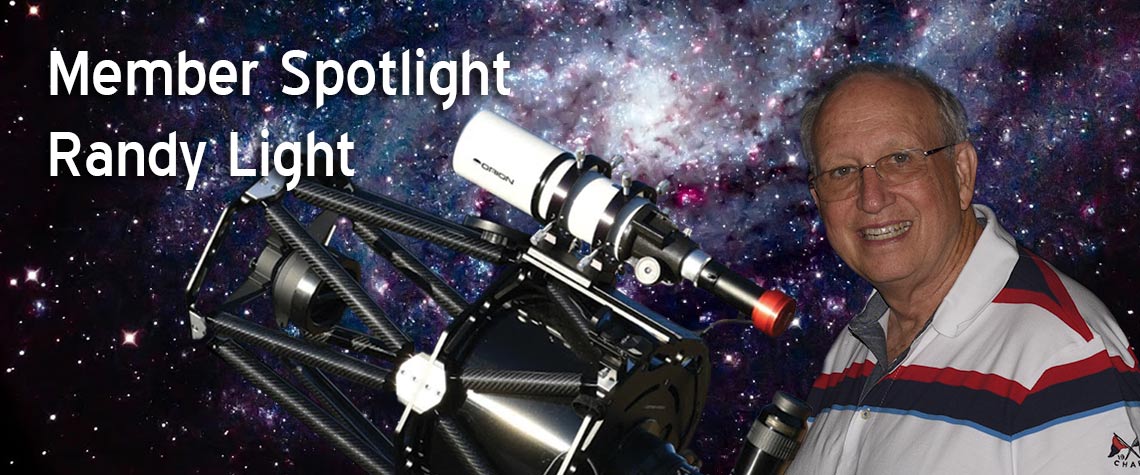
Member Spotlight - Randy Light, M.D.
By Randall Light, M.D.
I am Randy Light, a native Texan, who was born in Dallas, Texas. My family moved to Cedar Hill, Texas, when I was 13. Irene, my wife, and I have been married for 43 years. We have three children and eleven grandchildren ages 10 and under. Two additional grandchildren are expected this summer. After earning an undergraduate degree in electrical engineering, I studied medicine at the University of Texas Medical Branch in Galveston. After completing medical school, an internal medicine internship, and three years of neurology residency at UTMB, I became board certified in neurology. In 1981, I entered private practice as the first neurologist to practice in Bryan/College Station. After thirty-two years of private practice, I retired in 2013. In addition to being a husband and grandfather, I’m interested in photography, computers, amateur radio, home automation, and astronomy.
Early Interest in Astronomy
Over the years, I have had a variety of experiences that have heightened my interest in astronomy.
- In October, 1956, I stood in the front yard with my father and watched Sputnik I fly directly overhead.
- In elementary school, when there was a manned space flight, we were ushered into a TV room where we watched in awe as the rockets were launched.
- During several summers, a friend and I rode the bus to the Texas State Fairgrounds where we attended a week of programs on health, science, and astronomy at the Health and Science Museum. The planetarium programs were always my favorite.
- At about age 13, I stayed up late and watch a spectacular Perseids Meteor Shower.
- After I retired, we went to Big Bend National Park where I took my first photos of the Milky Way. I was hooked.
- When Mark Spearman invited me to attach my camera to his telescope, I was truly amazed and grateful.
Photographing the Night Sky
Initially, I was delighted to find that I could use my existing camera and assortment of lenses to photograph the night sky. Mark generously loaned me his Losmandy G11 German equatorial telescope mount. With a little custom hardware work, my Nikon DSLR and 600mm telephoto lens could be attached to the mount. Learning to do a polar alignment allowed me extend exposure times from about fifteen seconds on a tripod to two minutes with the G11. As the polar alignment improved, the length of the exposures became longer. At this point, the effort to photograph the Orion Nebula with longer exposures began in earnest. Eventually, the G11 was returned to Mark, and I obtained an Astro-Physics Mach1 telescope mount. Later, to photograph smaller objects, a ten inch 2000mm Astro-Tech AT10RCT Richey-Chretiens telescope was obtained and is mounted in the Regina Caelorum Observatory most of the time. For portable observing I use the Mach1 mount with an Astro-Tech 115mm refractor. For portable astrophotography I use my Nikon DSLR camera and a telephoto lens with the Mach1. For the 2018 Texas Star Party the Mach1 and the AT10RCT were used.
Process for Astrophotography Session
- A night of astrophotography begins by looking at the sky and checking observing conditions.
- When conditions are favorable, a planetarium program helps me determine what objects are available to photograph. Large, bright objects near the zenith are ideal targets but not always available.
- After reviewing the size, visual magnitude, transit time, and color of the object, a telescope or camera lens is selected to obtain the desired field of view. The need for a filter is also considered.
- After the telescope, mount, and camera are assembled, telescope collimation is checked. The telescope is focused optically, and software metrics are measured to verify sharp focus.
- Test exposures guide the final exposure settings to obtain a well exposed image with as low a noise level as possible.
- A sequence of images is obtained and later combined into a final image. Exposures of four minutes or more typically require using a guide scope and camera to prevent distortion of the stars due to a variety of causes.
- The result of this process yields an image that is edited in Photoshop.
My favorite objects are the Orion Nebula, the Horsehead Nebula, the Andromeda Galaxy, the Hercules star cluster (M13), the Milky Way, and the Sagittarius Star Cloud. The total solar eclipse last year stands out as a once in a lifetime awe-inspiring experience (until the next one in 2024). Although each of these and so many other objects are beautiful and awe-inspiring, nothing has ever been more exciting than seeing that very active Perseids Meteor Shower at age 13. I hope to someday see another meteor shower that dramatic.
Advice for Beginners
For beginners, follow the advice Tom Campbell gave last month. Start simple. In addition, find a mentor who can help and guide you through what will seem very complex. Mark Spearman is my mentor and friend. From an amazing knowledge base he provides guidance, assistance, honest feedback, and encouragement. He has helped me understand that in astronomy and astrophotography there is sometimes simplicity on the other side of complexity. On the other hand, sometimes what is perceived as simple is astoundingly complex. Not only can a mentor help a beginner find his way, a mentor can also can help you laugh at some of the absurd mistakes that invariably occur.
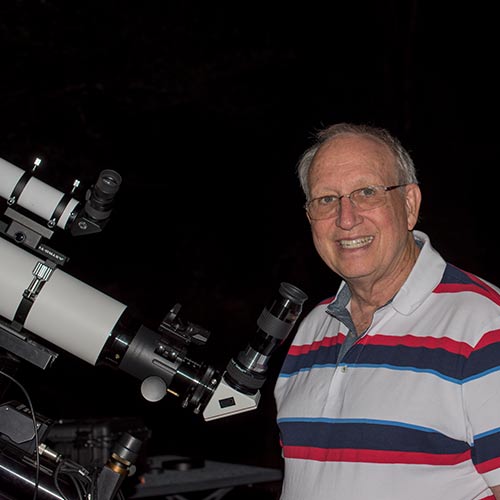
Observing night
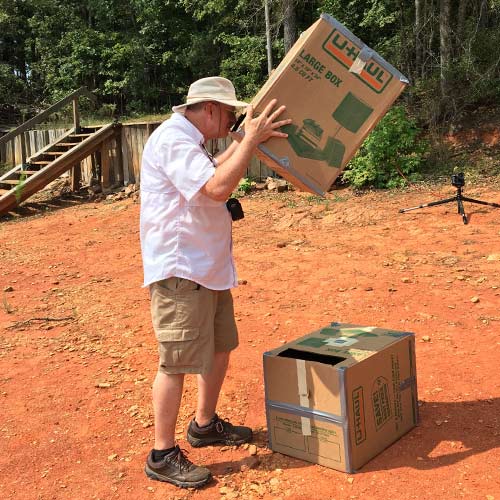
Looking through obscure camera
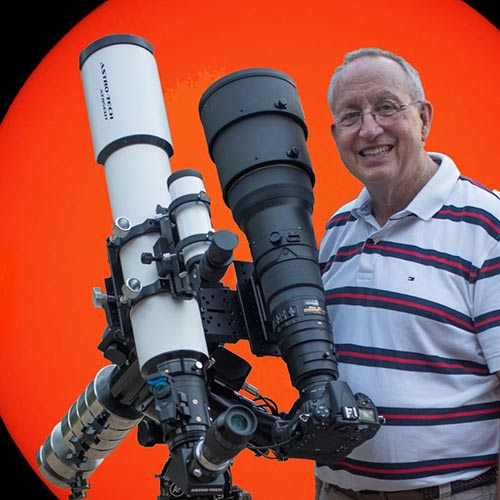
Combined images of Randy and image of his photograph of sun
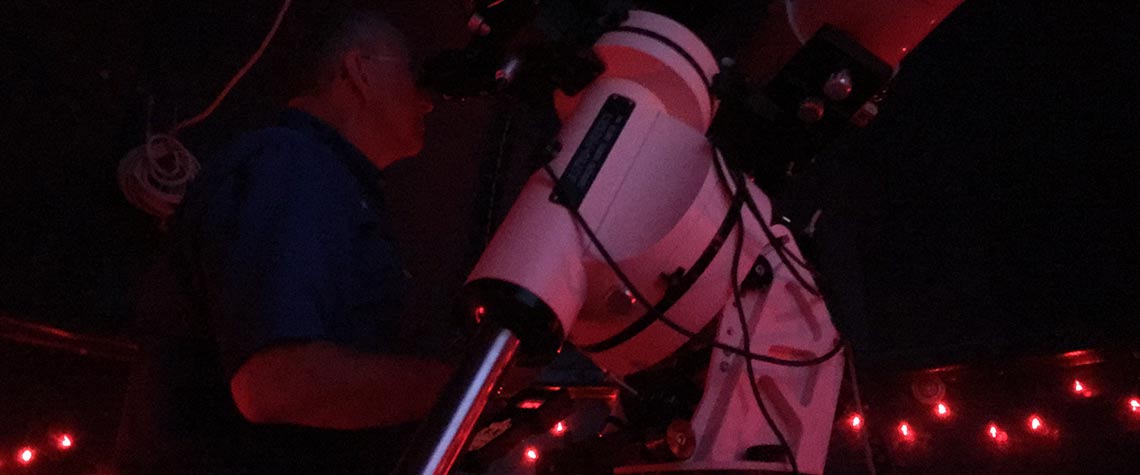
Observing deep sky objects at Brazos Valley Astronomy Club Messier Marathon
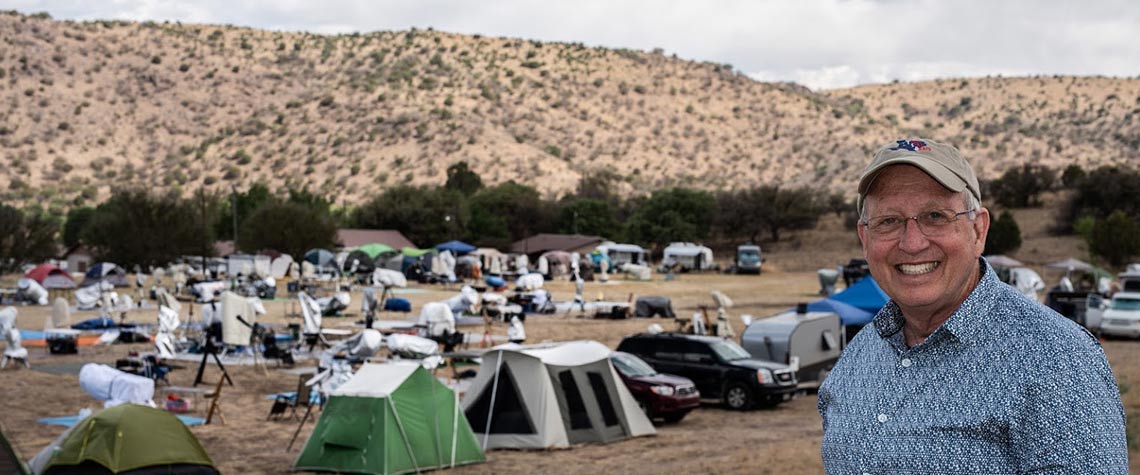
Fun at 2018 Texas Star Party
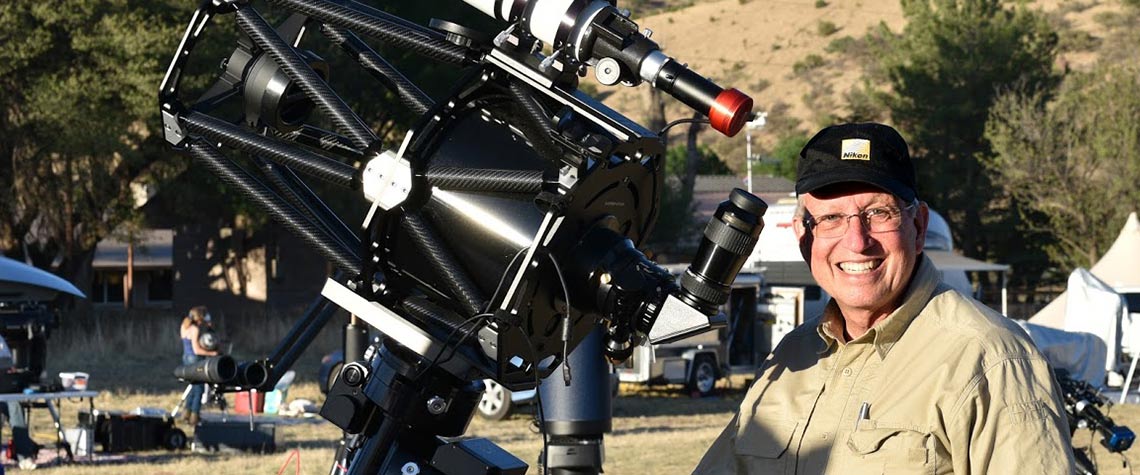
Setting up 2000mm Astro-Tech AT10RCT Richey-Chretiens telescope for 2018 Texas Star Party
